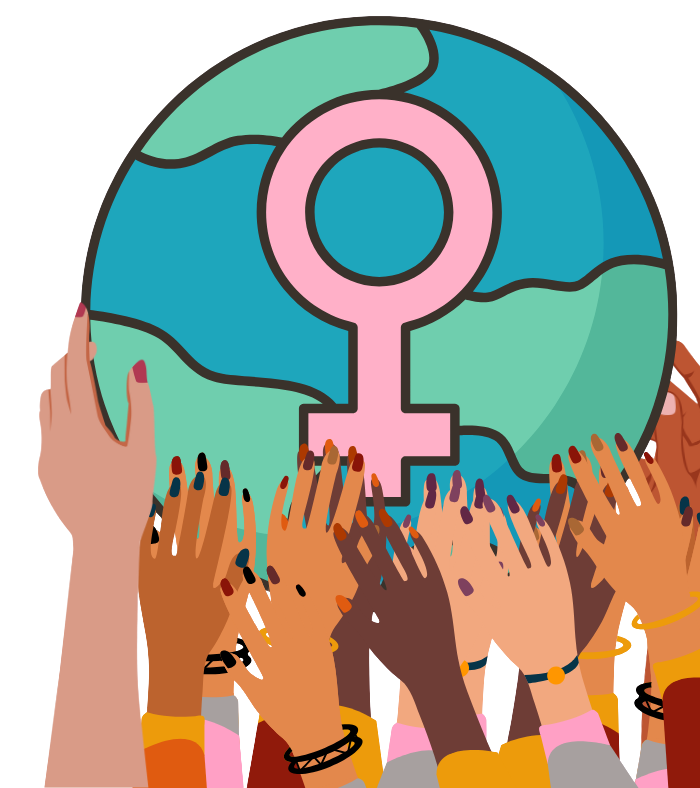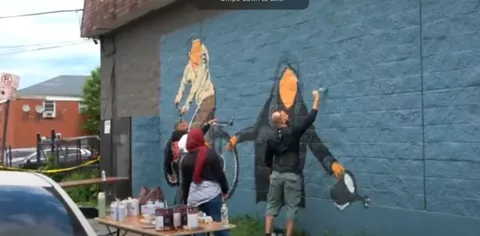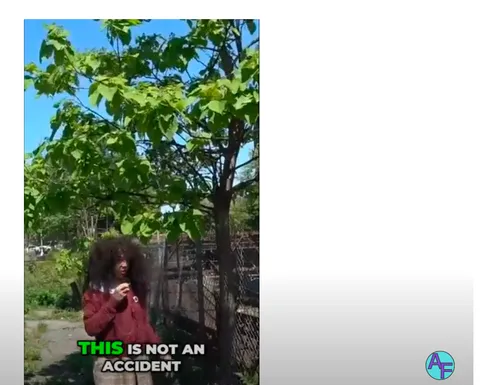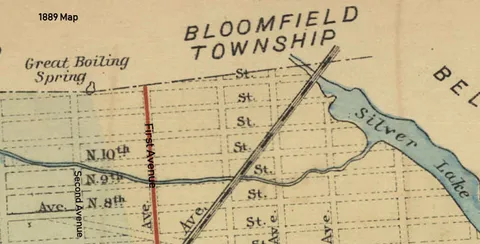Since moving to New Jersey, I’ve dreamed of effortlessly using my bicycle to get around. I live in a central location—walking distance from NJ Transit heavy rail, which gets me to Midtown Manhattan in 20 minutes (faster than finding parking in Los Angeles, I might add). The light rail is even closer, connecting me to the PATH and catapulting me to Lower Manhattan or Greenwich Village in the time it takes for me to make a wisenheimer response to an autocentric crank on social media. Yet, despite all this, I can’t easily access Newark, East Orange, or Montclair without a car.
I do understand the side street concept. But I don’t want side streets. As nonbinary, transgender, and cisgender women don’t appreciate dark streets, we also don’t appreciate bicycling where people can’t see us. I want witnesses—just in case I become someone’s hood or lawn tchotchke. Besides, Bloomfield Avenue is absurdly wide and a critical artery for the area.
It wasn’t always absurd. Once upon a time, Bloomfield Avenue hosted a light rail that ran from Newark to Caldwell. Today, it could easily accommodate a proper cycle track—if only we prioritized people and community over speed and car crashes.
A recent Rutgers study underscores the benefits of protected bike lanes:
"After controlling for direction, hourly traffic flow, and vehicle behavior (i.e., free-flowing or stopped at a red light), we found that delineator-protected bicycle lanes (marked with traffic cones and plastic delineators) were associated with a 28% reduction in average maximum speeds and a 21% decrease in average speeds for vehicles turning right. For those going straight, a smaller reduction of up to 8% was observed. Painted-only bike lanes were also associated with a modest speed reduction of 11–15%, but only for vehicles turning right. These findings suggest an important secondary benefit of bicycle lanes: by having a traffic-calming effect, delineated bicycle lanes may decrease the risk and severity of crashes for pedestrians and other road users."
In other words, bike lanes don’t just help cyclists—they make streets safer for everyone.
On platforms like Nextdoor and Facebook, drivers constantly complain about kids and delivery workers on bikes. Honestly, I empathize. Our streets are so poorly designed they seem bespoken for insurance companies to drop your coverage.
“Oh, you hit another kid on a bike? We’re canceling your policy. Enjoy the bus.”
And according to the people I have met in New Jersey taking the bus anywhere besides Manhattan is a social death sentence— “My god, we already live in New Jersey.
That isn't my purview, I love the bus and New Jersey!
So, how do we survive in this dystopia where cars aren’t just financially draining but are actively killing us and the planet? Cars account for one-third of U.S. air pollution. According to the Journal of Geography, since their invention, cars and automobility have killed 60–80 million people and injured at least 2 billion. Today, 1 in 34 deaths is caused by automobility.
Bloomfield Avenue connects North New Jersey’s most important communities—communities that are the ENGINE to all of the Metro area (Stephen Colbert lives here!), yet it lacks even the most basic infrastructure to support cyclists safely. There is life beyond Manhattan…there is Newark, Montclair, and Los Angeles…What we needs is a protected bike lane—and yes, a trolley would be nice, too. But let’s start small. Baby pedals. Baby pedals…






